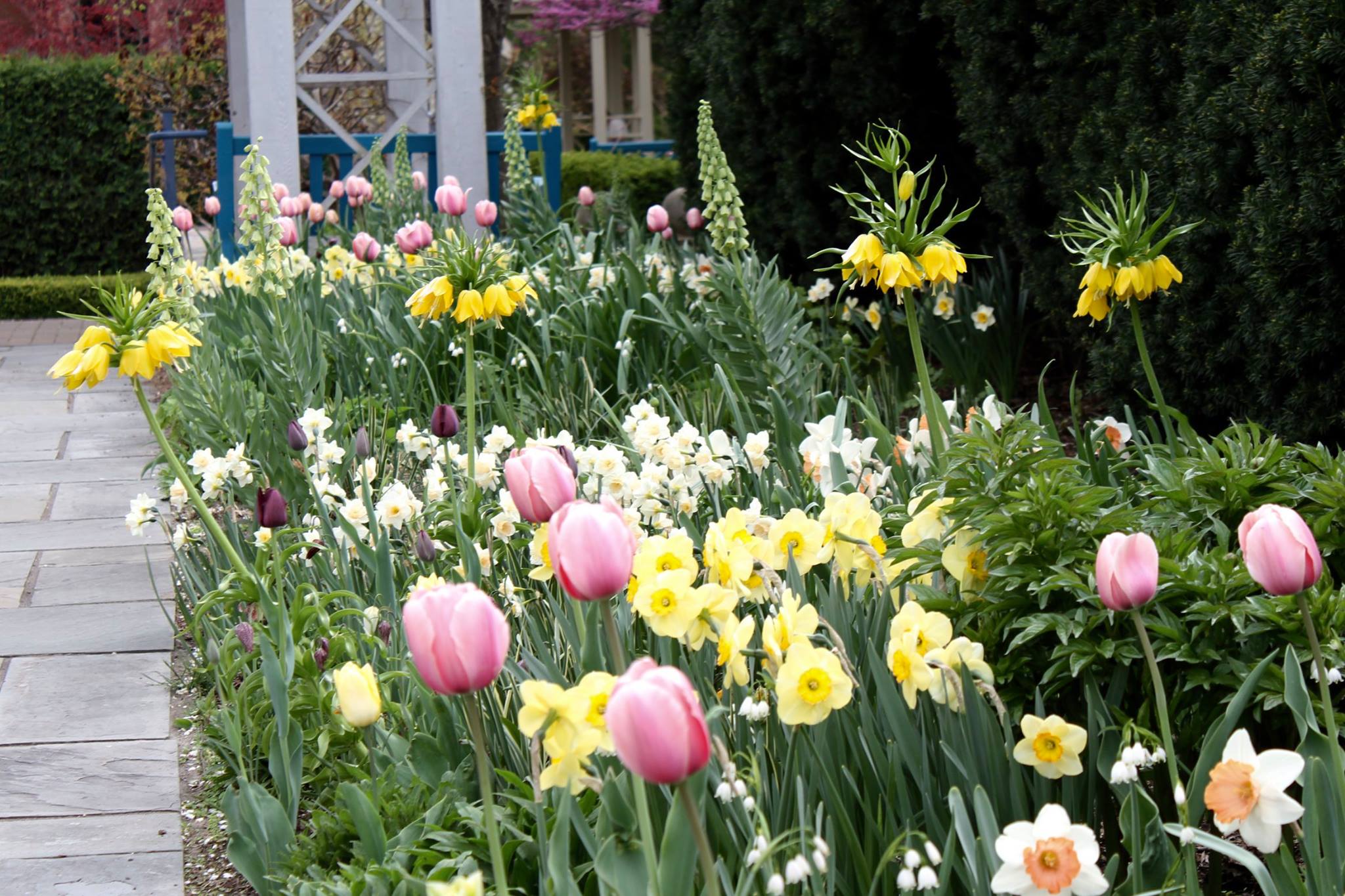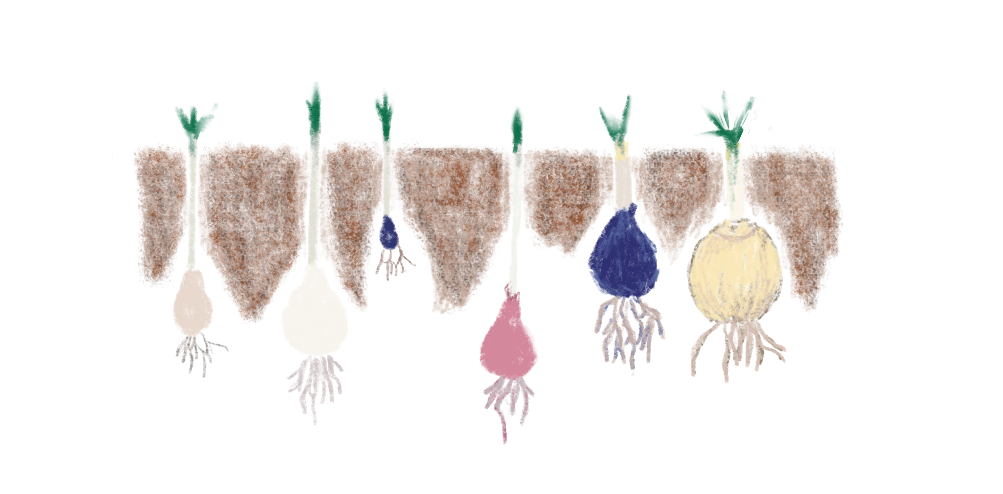Let’s Grow Stuff: How to Order Fall Bulbs
I find gardening is often like a time travel episode of Star Trek, one of those where the timeline splits into multiple realities all experienced by the same person at the same moment.
08/24/21
I find gardening is often like a time travel episode of Star Trek, one of those where the timeline splits into multiple realities all experienced by the same person at the same moment.
08/24/21
How to Order Bulbs - Fall Planting Your Spring Bulbs
I find gardening is often like a time travel episode of Star Trek, one of those where the timeline splits into multiple realities all experienced by the same person at the same moment. We’re living in the now, watching our flowers bloom and harvesting our summer veggies. We’re also living six months in the past, when we planned what we were going to grow and plant for a summer harvest. And, we’re living in the future as we think about what to plant today for next year, or the year after, or a decade later – ah!
In this spirit, today we’re talking spring-flowering, fall-planted bulbs. Talk about a temporal paradox… Bulbs we order today will likely arrive in early to mid-October to be planted (hopefully) before the ground freezes, to be fully enjoyed from March until May next year. That’s like having our feet in three time zones at once! While spring 2021 may feel like a distant memory, for me, spring of 2022 is top-of-mind right now.
Why order bulbs now when we’re living in the height of summer? It’s the same reason we order seeds in early January: If we wait until the end of September, most companies will be sold-out. We want to get the best picks for our garden!
1) Growing Conditions
There’s a lot to unpack in the descriptions you’ll find in any plant catalog. First — and this may sound obvious and it’s because it’s a point worth repeating — choose the right plants for the place you’re gardening. Let’s take Camassia, also known as Quamash, as an example. Camassia prefer to grow in moist soil, something quite unique in the world of bulbs. If you have a rain garden or area of your garden that’s constantly wet in spring, Camassia is an excellent choice. On the opposite end of the spectrum, things like Allium and Tulips hate to be constantly wet and will rot if you put them in a soggy place. Right plant, right place.
Most bulb suppliers will indicate a plant’s preferred growing conditions in their description, so make sure to pay attention to this.
2) Bloom Time
Next, let’s talk about bloom time. Most catalogs use three terms to categorize a bulb’s bloom time: early, mid and late season. Some plants, usually those that bloom later in the season like Allium and lilies, have a specific bloom time identified and tied to a calendar date, e.g., mid to late May. Things like daffodils and tulips, however, use the early, mid and late season categories: You’ll rarely find a calendar date attached to them.
Why is this? Let’s imagine a plant that’s hardy from the southern tip to the northern corner of Wisconsin, a difference of several growing zones. This plant will grow happily in both places, but spring might arrive 2-3 weeks earlier in the south compared to the north. Plus, bulb blooms can be temperature sensitive and a warmer-than-normal day will speed up the progression of blooms. Since there’s so much variability based on location and climate, it’s easier for bulb suppliers (and us as gardeners) to plan based on the early, mid and late terms.
To achieve an extended bloom and consistent spring interest in your garden, select at least one bulb variety from each category. This also allows you to change the look and feel of your garden simply by selecting different colors and forms. Let’s say you begin the early season with all yellows, and then select oranges for the mid-season, concluding with a dominant red for the late season. There will be some overlap from one season to the next, but it’s highly unlikely the early varieties will bloom with the late ones.
If you want to achieve a consistent color, look and feel throughout spring (all yellow all the time!) the same rule applies. Select at least three similar varieties from each of the bloom time categories and plant them together.
In this case, “minor” doesn’t refer to the age of bulbs, but rather their size. Minor bulbs typically bloom early in the year and include things like crocus, snowdrops, and rock garden iris (Iris reticulata). These bulbs are cheap per unit compared with the larger, later-blooming varieties like daffodils and tulips. You can purchase hundreds of crocus for less than $100, and in my opinion, you need these large quantities in order to make an impact.
Think about it: the flowers of minor bulbs are demure and close to the ground: they don’t usually occupy the same diva status as larger, later-bloomers. A single crocus could get totally overlooked in the garden, but 25 all in one space? Different story…
When adding bulbs to your garden, don’t forget to include the minors.
Most bulbs will naturalize given time, and this can happen in two ways. First, most bulbs will multiply over time through asexual reproduction. This happens out of sight and underground after planting, and you’ve probably seen this before if you grow spring-flowering bulbs. Last year you planted a single daffodil bulb, and this year you have three in the same space! Next year, you have five, then seven and so on. A single bulb will bulk up over time.
The second method of naturalizing is reseeding, and this can happen with bulbs that are allowed to produce viable seed. Grape hyacinth (Muscari), glory of the snow (Scilla) and winter aconite (Eranthis) are a few examples.
⚠️ Reseeders can form colonies quickly, and it’s worth noting that Scilla is now being considered as a plant of concern by the Wisconsin DNR with several other states as it can escape our gardens and displace native plants. Just because a plant is available for purchase doesn’t mean you should plant it.
Not all bulbs will naturalize: Some have only one good year in them (looking at you, tulips), and every subsequent season we might see a decline in bloom density and flower size. For this reason, many of the showy tulips are grown as seasonal/annual plantings and are removed and replanted each season. The exception to this are the species tulips, which will naturalize wonderfully. Keep this in mind when ordering and designing.
You can use bulbs’ natural tendency to naturalize to your advantage, especially if you’re planting bulbs somewhere like a lawn where you won’t be able to easily dig and divide them when they multiply as you would in a conventional garden.
Stay tuned for a Let’s Grow Stuff episode later this year on how to design and plant a bulb lawn.

Photo: Ben Futa
I like to think about bulb design in two broad categories: formal and informal. Formal designs might involve a smaller garden space, possibly urban, where you want to make a bold and full statement. In this case, we might be using more temporary bulbs (here come the tulips again) and removing the design each year. To create the most showstopping display, we want to plant densely, often in a grid pattern where bulbs are evenly spaced and the colors are evenly distributed.
For informal plantings — i.e., interplanting bulbs into a lawn or established perennial garden — I like to take a more organic approach by tossing handfuls of bulbs onto the ground and planting them where they fall. If you choose to layout your bulbs with this method, be gentle — they aren’t shot puts or baseballs. Before layout, especially when planting an informal design, I like to mix my bulbs in a large bucket or wheelbarrow to try and get an even distribution of varieties and colors.
Try tossing them in different configurations: straight up or directionally (imagine you’re bowling with 15 balls at once). You can also imagine you’re sprinkling salt over your garden and dribble them onto the ground in various patterns. Experiment with different configurations based on where you’re planting and have fun!

Different bulbs get planted at different depths.
When it comes to planting, a good rule of thumb is that bulbs should be planted at *twice* the depth as a bulb is high. If a daffodil bulb is 3-inches tall, plant it 6-inches deep. A crocus is ½-inch tall, it should go about 1-inch deep.
And, most important: The pointy-end of a bulb should face upward and the flat side down. The pointy-end (the technical term, ya know!) is where the leaves and flowers come from, and the flat side is where the roots will emerge. Bulbs are smart and can sense how they’re planted. If you happen to plant one sideways, it will find its way and grow properly, but it will expend more energy in the process, and that energy will take away from flowers.
Well, there you have it: Our time travel episode is nearly complete. Now that we know the plan — the action of ordering bulbs today, planting bulbs tomorrow and enjoying bulbs next spring — we can shape our future however we wish. Have fun and boldly garden like you haven’t gardened before.
What do you think?
I would love to get your thoughts, suggestions, and questions in the comments below. Thanks for sharing!
Benjamin Futa